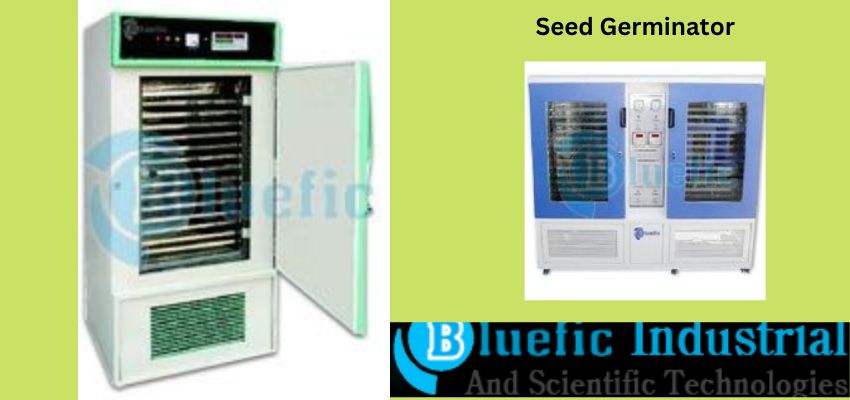Jasmeet Nagar, Ambala, Haryana
- GST NO. : 06AGZPM1590J1ZQ
View Mobile Number
A Short Guide To How Seed Germination Works
Posted by Admin on January, 30, 2023

The Germination Chamber offers the seeds the best conditions for germination. The germination chamber increases germination rates, shortens lead times, and improves consistency. To give seedlings the best possible environment for germination, specialised rooms and chambers are necessary. This article will help you in choosing the best Seed Germinator Manufacturers India.
How Does It Work?
Fluorescent lights like the T-8 and T-5 are frequently used in germination chambers. Warm and cool white produces the finest results. To shine light directly on the seeds, the light canopy is placed above the trays. For the best conditions for various species, seed businesses and growers frequently employ germination chambers.
Typically, shelves with fluorescent lighting are spaced 12 to 18 inches apart. Before being transferred to the greenhouse, the seeds are stored under the shelves for two weeks at a precise temperature and humidity levels. below micromoles/m2/s of light. Because the greenhouse does not need to be started for several weeks, the seed germination chamber uses less energy.
The Seed Germination Rule
A thorough examination of a seed's viability is the goal of seed germination. To put it another way, seed germination is the process by which we check the number of seeds that can grow and yield a good crop. The results of a seed germinator are also utilised for the seeding, labeling, and certification of seeds.
Elements For The Germination Chamber
Vital Elements for the Germination Chamber are Temperature, Light, Humidity, and Oxygen are the most vital elements for germination.
Humidity
4–12% of the humidity in a packet of seeds is present. An increase in humidity to 50% is required for the seed to germinate. In touch with the seedlings, the germination chamber offers greater humidity accuracy and optimum water drainage.
Temperature
Germination chambers are made to withstand a wide temperature range for various seed species. The USDA and several colleges around the world have tested the aforementioned component. Some species, such as marigolds, can germinate in a range of 10 and 30 degrees. Freesia and other species can germinate between 10 and 20 degrees Celsius. The temperature range for chambers can be changed from 4° C to 50° C.
Light
For seeds to germinate uniformly, there must be enough light. The light spectrum in the germination chamber is very broad. A small number of producers also expose seeds to light before selling them. Once the seed begins to germinate, light is crucial to preventing stretching.
Steps in the Growth of a Seed
• Imbibition: The seed rapidly absorbs water, swelling and softening the seed coat. Consider a pea seed that has been soaked; the seed coat becomes wrinkled and mushy as a result of the water.
• Interim or lagging period: The seed enters this phase where its internal physiology is activated, cells begin to respire, and the seed begins to produce proteins and utilise its food reserves.
• Root and radicle emerging: The root and radicle emerge from the seed as the cells begin to lengthen and divide.
To produce more consistent and robust seedlings, Seed Germinator Test Chambers are necessary. These are for the germination and development of seeds under several critical environmental conditions. This includes humidity, temperature, and illumination. Without leaving the chamber, the generation of precise environmental conditions is necessary. This is helpful to conduct various experiments.
Search
Category
Recent Posts


Leave a Comment